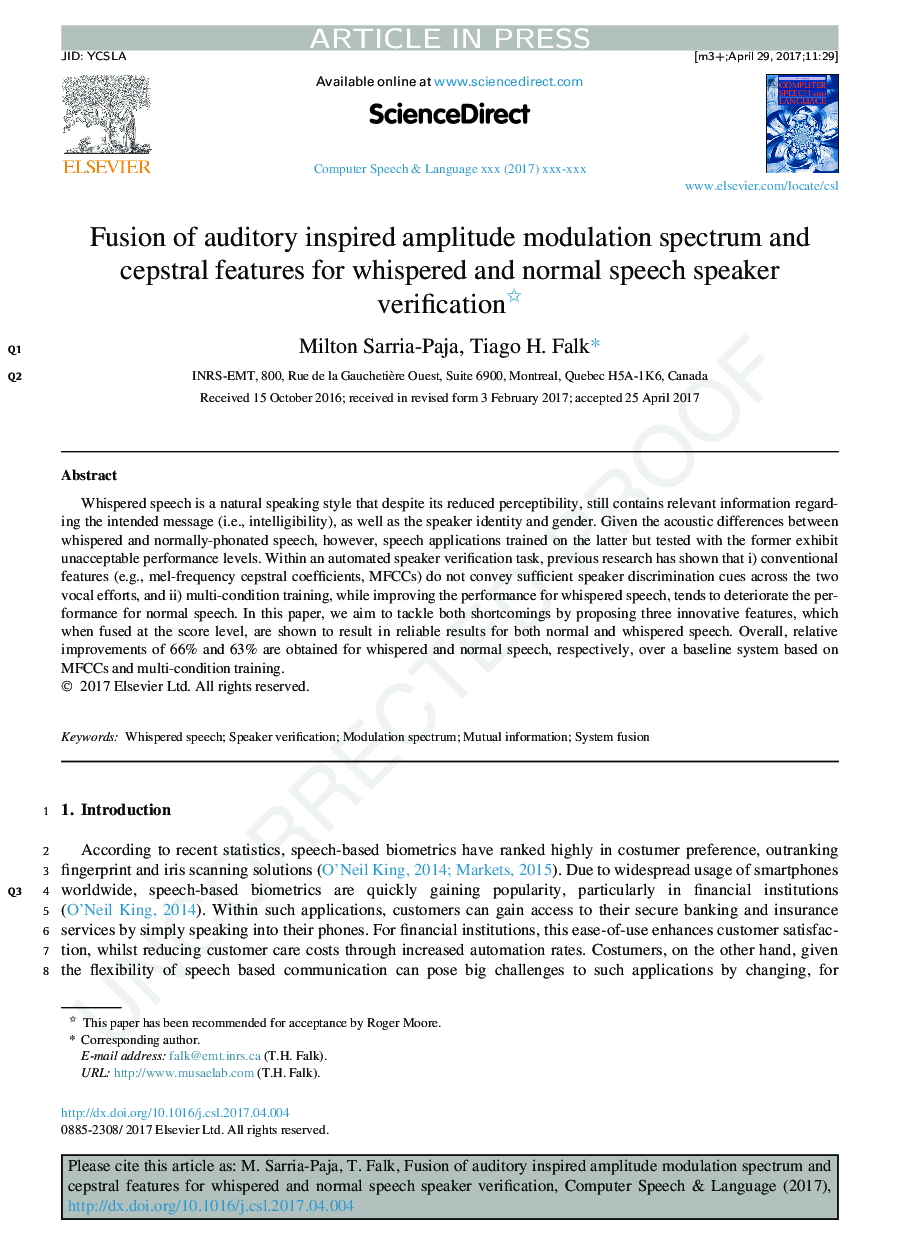| Article ID | Journal | Published Year | Pages | File Type |
|---|---|---|---|---|
| 4973684 | Computer Speech & Language | 2017 | 20 Pages |
Abstract
Whispered speech is a natural speaking style that despite its reduced perceptibility, still contains relevant information regarding the intended message (i.e., intelligibility), as well as the speaker identity and gender. Given the acoustic differences between whispered and normally-phonated speech, however, speech applications trained on the latter but tested with the former exhibit unacceptable performance levels. Within an automated speaker verification task, previous research has shown that i) conventional features (e.g., mel-frequency cepstral coefficients, MFCCs) do not convey sufficient speaker discrimination cues across the two vocal efforts, and ii) multi-condition training, while improving the performance for whispered speech, tends to deteriorate the performance for normal speech. In this paper, we aim to tackle both shortcomings by proposing three innovative features, which when fused at the score level, are shown to result in reliable results for both normal and whispered speech. Overall, relative improvements of 66% and 63% are obtained for whispered and normal speech, respectively, over a baseline system based on MFCCs and multi-condition training.
Related Topics
Physical Sciences and Engineering
Computer Science
Signal Processing
Authors
Milton Sarria-Paja, Tiago H. Falk,
